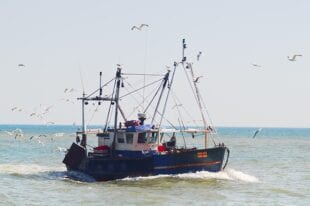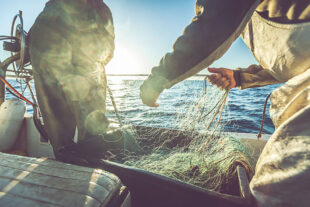Our survey of fishers in England’s under-12m fleet on their requirements for an I-VMS device that’s suitable for their vessel closed this week.
More than 360 fishers completed the online poll, and we would like to thank each of you for your insights and views.
We are currently reviewing your responses so we can use the feedback, anonymously, in conversations with companies that may supply I-VMS devices.
Our aim is for there to be a range of devices available to suit every type of vessel and so we appreciate the valuable feedback you have given us so we can do further work on:
- fitting and powering devices
- quality and reliability of the equipment
- seeing your own data
- understanding costs and contributions towards them
- maintenance and repair services

MMO is committed to working with the under-12m fleet to support the introduction of I-VMS and is planning a series of online events over the summer and autumn when we aim to have more information to cover these matters.
The survey also made it clear that there is more that MMO can do to reassure fishers about IVMS. Specifically, we have more we can now say on:
- How I-VMS works
- Privacy of data
- Who will need to comply with the I-VMS rules
- Why I-VMS
How I-VMS works
I-VMS records the location, speed and heading of a vessel using a secure, tamper-resistant system on board. Using a secure line, it sends this information to the MMO’s national operations centre using mobile telephone technology, which is usually more cost-effective than the satellite data transfer used by many of the larger vessels.
Once the I-VMS device is fitted, it works automatically when powered, meaning fishers do not have to spend time turning it on and setting it up each time they put to sea.
Protecting fishers’ privacy
The signals sent by each I-VMS device can be seen only by the MMO, and local IFCAs and devolved fisheries administrations if a vessel enters their waters.
Other fishers and the public cannot see fishers’ locations and the data feed is protected by a state-of-the-art system. MMO will only share the information with organisations that require it as part of regulating and managing the marine environment and they will be governed by strict data sharing principles and regulations.

Who has to comply with IVMS?
The future intent is that a vessel monitoring system (VMS) will become a requirement for all under-12m fishing vessels, to ensure parity amongst all fishing vessels operating in English waters.
Why IVMS?
Now that the UK is an independent coastal state, we have the scope to determine the best fisheries management strategies to support a thriving industry for future generations while conserving our vital marine environment.
It is intended that a vessel monitoring system (VMS) will become a legal requirement for under-12m fishing vessels in English waters. This is part of the Government’s strategy to improve data collection to support development of more responsive fisheries management measures and practices that will enable the industry to benefit from leaving the Common Fisheries Policy. I-VMS will support work by MMO and IFCAs to assure that fisheries regulations are being complied with by all fishing vessels throughout England’s waters.
Data derived from I-VMS will provide a more complete picture of all fishing in our seas. Combined with data on catch volumes, scientific evidence of stock levels and a range of other significant data, I-VMS will enable more efficient decisions on local and national management measures and policies.
It will also enable the MMO to continually improve its targeted assurance activities as the clearer picture of fishing activity will help highlight which vessels are consistently complying with regulations on where and what they can fish, and those that may introduce risk to the sustainable harvest of sea fisheries.
To sustain fishing for the future we need to make best use of this technology to:
- Enable more accurate monitoring of the types of fishing being undertaken. This means access may be allowed to certain types of fishing in areas where it was previously prohibited
- Provide fishermen with evidence they can use in consultations on Offshore Windfarms, Marine Protected Areas and marine infrastructure developments, which have been increasing over the last decade.
- Prove that England’s fishers and marine regulator are taking appropriate steps to make fisheries more sustainable and, as a result, the industry will be able to better market the sustainability of its products